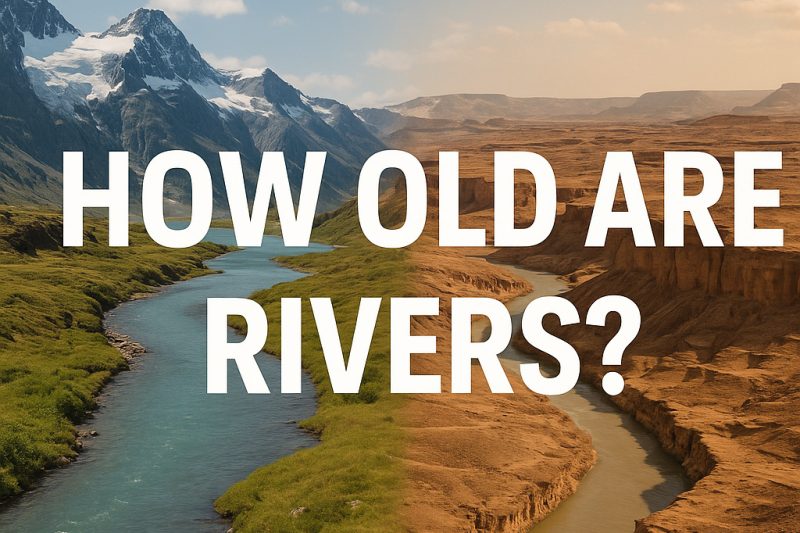How old are rivers? Explore the age of rivers—from young glacial streams to ancient flows older than dinosaurs—and what they reveal about Earth’s past.
When you stand beside a river and watch it flow, it’s easy to think of it as something timeless. Eternal. But rivers, like mountains and seas, are born, age, and sometimes die. Some are mere infants, shaped by the last Ice Age. Others are venerable elders, their waters carving through continents long before dinosaurs walked the Earth.
So—how old are rivers, really?
🌱 The Young Ones: Born from Ice and Fire
Many rivers on Earth are geological babies, formed within the last 10,000 to 20,000 years after the last glacial maximum. These include countless rivers in Europe and North America, whose courses were carved or redirected by retreating glaciers. Think of Canada’s rivers or the upper parts of the Mississippi—formed as meltwater carved new paths across freshly exposed land.
In Iceland and volcanic regions, rivers are even younger—some less than a few thousand years old, birthed from lava flows and shifting tectonic plates.
🧭 The Middle-Aged Wanderers
Other rivers are tens of millions of years old. The Amazon, for instance, is thought to have originated as a westward-flowing river over 100 million years ago, back when South America and Africa were still neighbors in the great supercontinent Gondwana. Over time, as the Andes Mountains rose, the Amazon reversed direction and became the vast eastward torrent we know today.
Similarly, rivers like the Yangtze and Danube have been flowing in some form for tens of millions of years, evolving with the rise of mountain ranges, erosion, and the shifting of Earth’s crust.
🕰️ The Ancient Giants: Older Than Continents
And then, there are the truly ancient ones. Rivers that might be hundreds of millions of years old.
- The Finke River in Australia is a top contender. It may have followed the same basic course for over 300 million years, winding through the heart of the Outback even before the supercontinent Pangaea came together.
- The Nile, often dubbed the world’s longest river, has also flowed for at least 30 million years, though its course has shifted dramatically over time.
These ancient rivers are geological relics—survivors of tectonic shifts, sea level rises, and entire ice ages. Their valleys cut deep into the bedrock of time.
🧬 Why It Matters: Rivers as Memory Keepers
Rivers are more than water—they’re storytellers. They carry sediment from eroding mountains, record the passage of climates and civilizations, and sustain ecosystems across continents.
Understanding their age helps geologists reconstruct Earth’s past:
- Old rivers tell us about ancient landforms and tectonic histories.
- Young rivers help us see how fast landscapes can change after glaciation or volcanic activity.
Some rivers even preserve fossils, pollen, and minerals that reveal the story of life on Earth, inch by inch.
🌊 A Final Thought: The River and the Clock
The next time you sit beside a river, imagine its age.
Is it a bold young stream, just learning to shape the land?
Or is it an ancient wanderer, older than the mountains, carrying whispers from the dawn of time?
Rivers aren’t just part of the landscape.
They are the landscape—living, flowing memories of a planet always in motion.


